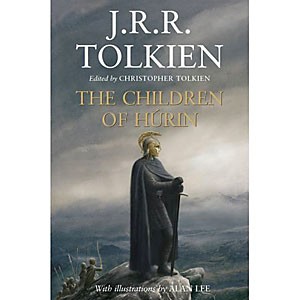“”Lord of the Rings”” fans rejoice! This month, a tale that J.R.R. Tolkien began in 1918 has been released, and has quickly climbed the bestsellers list.
“”The Children of Hurin”” details the fall of Lord Morgoth, the original force of evil, in an earlier Middle-earth that had not yet seen the likes of hobbits, but which is referenced nostalgically throughout the Lord of the Rings trilogy in legends and songs. Tolkien did not finish the novel, and it was completed by his son, Christopher. It expands upon a set of tales published as “”The Unfinished Tales”” and included as chapters of “”The Silmarillion,”” bringing together what had previously been mere backstory and dry history of Middle-earth into a fully developed story of its own.
Tolkien’s tale begins with the hero, Hǧrin, of the race of Men, is cursed by Lord Morgoth. This curse begins the fall of Middle-earth, from the joyous and fertile land it starts out as, to the dark shadow of itself we later see as the home of Bilbo and Frodo Baggins. Hǧrin’s children, Tǧrin Turambar and Nienor, are affected by the curse, and their tragic fates make up the plot of the novel.
Tǧrin’s journey begins when he is cast out of the town he grew up in after he is accused of murder. Setting out into an unknown world, Tǧrin joins up with a group of bandits, with whom he travels the Middle-earth and ultimately commits an unspeakable atrocity against sister Nienor.
9/10
What Tolkien fans might find most shocking about “”The Children of Hǧrin”” are the flaws we see in the protagonist. Whereas the hobbits seemed to be able to overcome unspeakable odds without failing or letting their courage wane, Tǧrin falls prey to the tricks of Morgoth. The Dark Lord is subtle in his evil traps and often persuades the hero, along with Elves and Dwarves, to indulge their sinister sides.
“”The Children of Hǧrin”” is much darker than “”The Lord of the Rings”” and lacks the hope of a positive ending. This book reads more like a Greek tragedy, with aspects of the complicated and tragic family relations that characterize that genre. Though bleak, this tale has elements of beauty, both in the descriptions of Middle-earth and the moments of strength in the often erring characters.
Tolkien’s latest publication reads as a wonderful reunion for fans with the fantastical world of dragons and Dwarves, Elves and evils that this world has come to love. The rich detail that creates such memorable characters and landscapes is as stunning as ever and, coupled with the moving tragedy of Tǧrin, makes this book an instant classic that cannot be missed.









